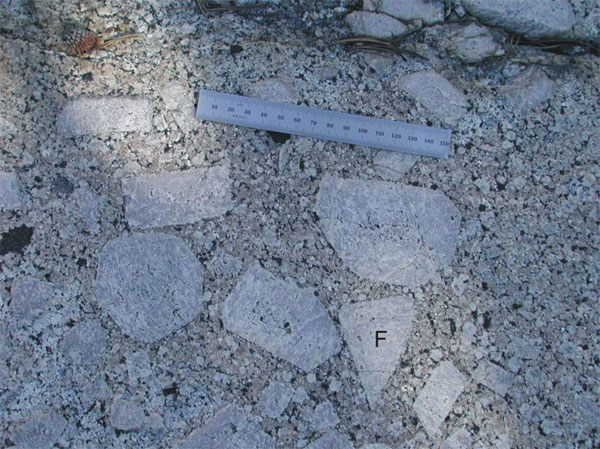The Tuolumne batholith (TB, Figure 1) consists of four recognized phases [Bateman and Chappell, 1979; Bateman, 1992]: (1) an outer granodioritic to tonalitic phase called the Kuna Crest (includes the Glen Aulin and Glacier Point tonalites and Kuna Crest granodiorite), (2) the Half Dome (HD) granodiorite, which consists of an outer equigranular (Khde) and inner porphyritic facies (Khdp); (3) the K-feldspar megacrystic Cathedral Peak (CP) granodiorite, and (4) the Johnson granite porphyry . Bateman and Chappell (1979) argued that this normally zoned intrusive suite formed from a single parent melt by in situ crystal fractionation. However, a subsequent geochemical study of enclaves [Reid et al., 1983] and a REE study by Kistler et al. (1986) showed that at least two separately evolved pulses were required, in part derived from mixing of basaltic and granitic magmas, and that the inner siliceous phases could have no more than 15% mantle component. Recent geochronological work [Kistler and Fleck, 1994; Fleck et al., 1996; Coleman and Glazner, 1997; Coleman et al. 2002 ] indicates that different pulses in this suite have moderately different ages (up to 1-3 Ma apart) and that the suite was constructed and crystallized over a 7-11 Ma period (~93 Ma to ~85 Ma), supporting the interpretation of Kistler et al. (1986). Because of the distinct geochemical and geochronologic differences between inner and outer pulses, this body is by definition not an intrusive suite , and we therefore us e the name Tuolumne Batholith (TB).
Recent detailed mapping and geochronology have suggested that at least the outer pulses may have been constructed incrementally [Miller and Miller, 2003, Glazner et al., 2004] , and that complex relationships occur along parts of internal contacts between the four main phases (Figure 2; Zak and Paterson, in review). Additional studies have also confirmed Bateman's (1992) original observation that two magmatic foliations occur in this batholith, and that at least the younger of these two foliations overprint all internal contacts and associated structures [Paterson et al., 2004 ], as shown in Figure 2.
K-feldspar megacrysts (Figure 3a, 3b) occur in the inner Half Dome, Cathedral Peak, and Johnson phases. We have examined all of these units , but will largely focus on the particularly well developed megacrysts in the Cathedral Peak phase.
Figure 3. K-feldspar megacryst characteristics

Megacrysts in the Cathedral Peak phase showing variable shapes, sizes, weak compositional zoning and rare fragmentation (marked "f");
Comb layering, involving dendritic crystals of K-feldspar in a relatively mafic layer at high angles to contacts and layering. Also present are K-feldspar megacrysts lying p arallel to the layering. The dendritic K-feldspar appears to have nucleated on (1) the walls of the mafic layer, (2) compositional layers (centre) and (3) the top surfaces of K-feldspar megacrysts (above centre). The compositional layering appears to have been deflected around some of the dendritic K-feldspar, but growth of the dendrites appears to have continued after deflection, transecting the layers. This, together with the nucleation of dendrites on megacrysts, suggests that the dendritic K-feldspar grew relatively late in the magmatic history. This may reflect delayed nucleation, caused by destruction of nuclei by superheating, possibly in response to the addition of water to the magma [Vernon, 1985].